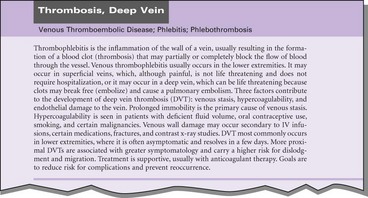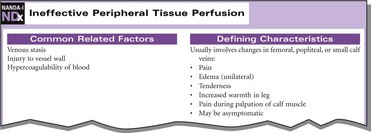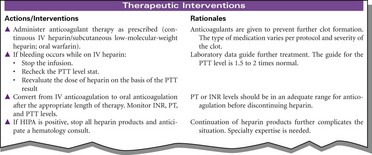Chapter 1 Each care plan in this book begins with an expanded definition of the title problem or diagnosis (Figure 1-1). These definitions include enough information to guide the user in understanding what the problem or diagnosis is, information regarding the incidence or prevalence of the problem or diagnosis, a brief overview of the typical management and/or the focus of nursing care, and a description of the setting in which care for the particular problem or diagnosis can be expected to occur. Each problem or diagnosis is accompanied by one or more cross-references, some of which may be synonyms (see Figure 1-1). These cross-references assist the user in locating other information that may be helpful in deciding whether this particular care plan is indeed the one the user needs. • Common related factors (those etiologies associated with a diagnosis for an actual problem) (Figure 1-2) • Defining characteristics (assessment data that support the nursing diagnosis) (see Figure 1-2) • Common risk factors (those situations or conditions that contribute to the patient’s potential to develop a problem or diagnosis) (Figure 1-3) Figure 1-3 Common risk factors, common expected outcome, and ongoing assessment of the nursing diagnosis. • Common expected outcomes (see Figure 1-3) • Ongoing assessment (see Figure 1-3) • Therapeutic interventions (both independent and collaborative) (Figure 1-4) NIC presents an additional opportunity for clarifying and organizing what nurses do. With NIC, nursing interventions have been systematically organized to help nurses identify and select interventions. In this eighth edition, NIC information continues to be presented along with each nursing diagnosis within each care plan, giving the user added ability to use NIC taxonomy in planning for individualized patient care. According to the developers of NIC, nursing interventions are “any treatment, based upon clinical judgment and knowledge, that a nurse performs to enhance patient/client outcomes” (Bulechek et al., 2013). These interventions may include direct or indirect care and may be initiated by a nurse, a physician, or another care provider. Student nurses, practicing nurses, advanced practice nurses, and nurse executives can use nursing diagnoses and NIC as tools for learning, organizing, and delivering care; managing care within the framework of redesigned health care and within financial constraints through the development of critical paths; identifying research questions; and monitoring the outcomes of nursing care both at an individual level and at the level of service provision to large populations of patients. Nurse investigators at the University of Iowa developed NOC, a taxonomy of patient outcomes that are sensitive to nursing interventions. The authors of this outcomes taxonomy state, “For the nursing profession to become a full participant in clinical evaluation research, policy development, and interdisciplinary work, it is essential that patient outcomes influenced by nursing care be identified and measured” (Moorhead et al., 2013). In this context, an outcome is defined as the status of the patient or family that follows and is directly influenced by nursing interventions. Gordon’s (1976) definition of a nursing diagnosis includes only those problems that nurses are capable of treating, whereas others have expanded the definition to include any health-related issue with which a nurse may interface. In Nursing Care Plans: Diagnoses, Interventions, and Outcomes the nursing diagnosis terminology conforms to the NANDA-I Nursing Diagnoses: Definitions & Classification, 2012-2014 unless otherwise stated.
Using Nursing Care Plans to Individualize and Improve Care
Components of These Nursing Care Plans

Nursing Diagnoses Taxonomy, and Interventions and Outcomes Classifications
Using Nursing Care Plans: Diagnoses, Interventions, and Outcomes
The Assessment
![]()
Stay updated, free articles. Join our Telegram channel

Full access? Get Clinical Tree


Nurse Key
Fastest Nurse Insight Engine
Get Clinical Tree app for offline access



